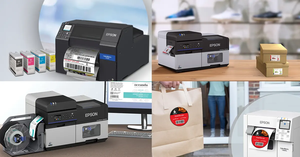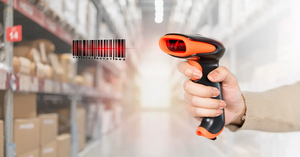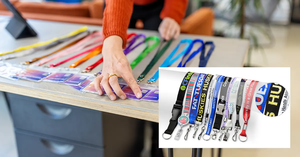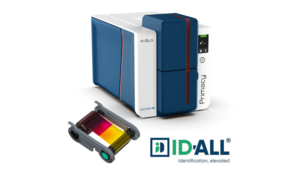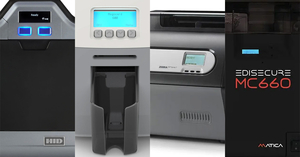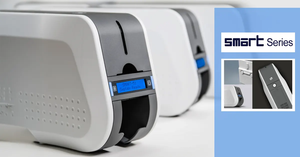Retransfer Printing Technology Offers Solid Advantages Worth Considering
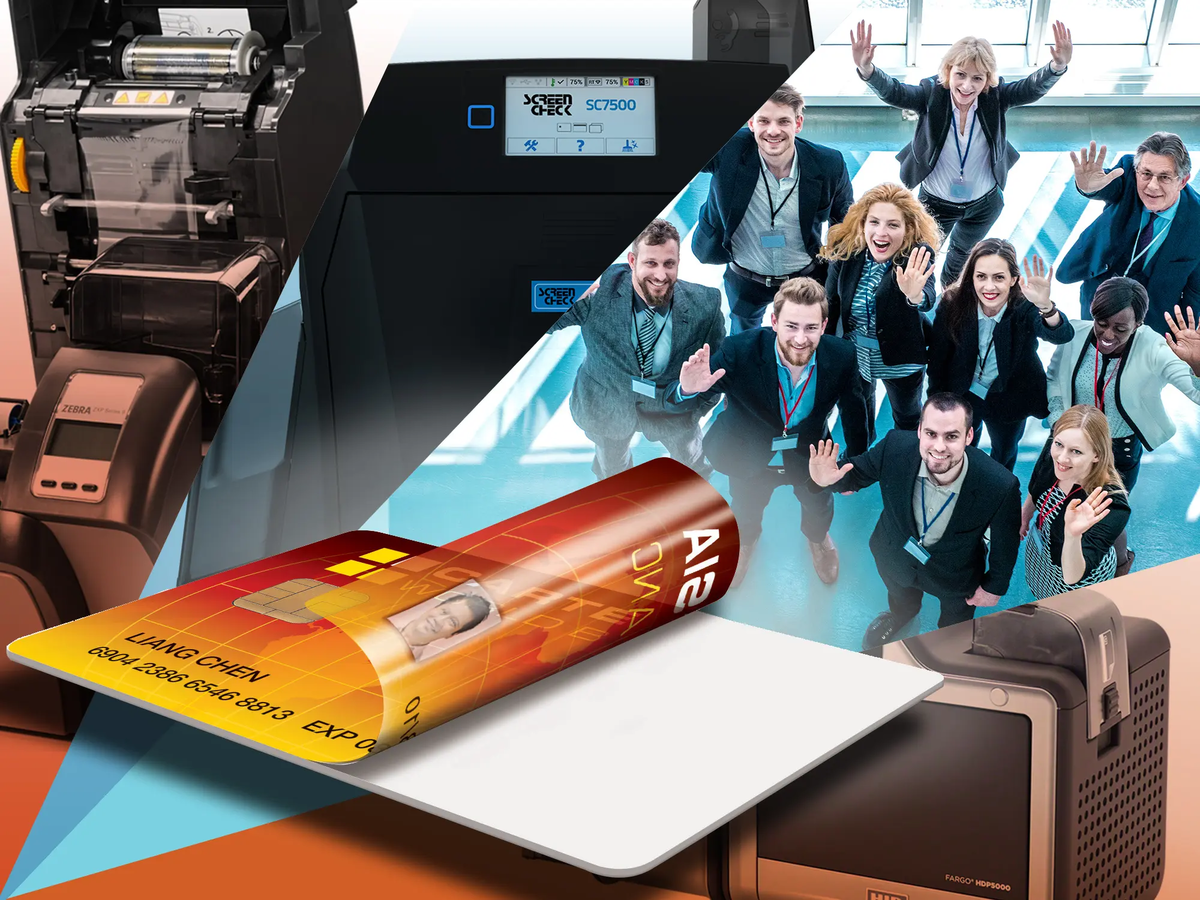
What is a Retransfer ID Card Printer?
Retransfer (reverse transfer) printers—the most advanced card-printing technology available—print reverse card images onto a flexible, transparent film (retransfer film; a thin clear substrate), and then thermally bond (fuse) the film onto the card surface with heat and pressure as a distinct secondary process. These two-steps—called “reverse thermal image transfer”—don’t print directly onto the card surface.
By comparison, traditional dye-sublimation direct-to-card printers use a printhead that prints through a ribbon directly onto the card surface; the printer’s expensive, and often delicate, printhead touches every PVC card directly, triggering increased printhead replacement. Any uneven part of the card surface—including contact with card edges—can cause expensive printhead damage.
Advantages of Retransfer Card Printers
- Combine unparalleled print speeds with photo-quality images and higher print resolution.
- Prints Over the Card Edge — Produce true edge-to-edge or "over-the-edge" prints that cover the entire card surface, and don’t leave the white border common with direct-to-card printers. (Direct-to-card printers can’t print to the card edge without risking damage to the printhead.)
- Designed for Volume and Long-Life — The printhead does not come in direct contact with (i.e., never touches) the card surface, which reduces printhead wear and tear and the risk of damage and malfunction. The printhead prints only on the retransfer film, and so isn’t exposed to dust and dirt on the card surface or uneven/poorly constructed PVC cards; print quality is not affected. This is what justifies the lifetime warranty on the expensive printhead.
- Successfully and reliably print perfectly to uneven card surfaces and a wider variety of card types including proximity cards, smart (technology) cards, pre-punched cards, and key-tag cards.
- Print Consistency — Avoids image-quality issues common with direct-to-card printers that can have trouble printing over the uneven surfaces created by embedded smart chips or antennas and circuits. Retransfer printers print onto a perfectly consistent and controlled substrate (the film) rather than the irregular surface of PVC cards. As a result, nothing disrupts or interferes with print performance.
- Produces rich, vibrant, saturated colors and photographic quality for a better-looking card.
- Successfully prints on more durable and abrasion-resistant non-PVC cards (like polycarbonate or composite cards). Dye sublimation requires a porous surface only available with PVC cards.
- Accommodate the thicker (30 to 40 mil) cards used in higher-security situations.
- HDP retransfer film delivers added durability and security and enhances fraud protection because the film provides an additional layer of tamper-resistance.
- Increased Durability —The bonded transparent film acts as protective coating that keeps the card image(s) from fading over time. The color image is printed onto the underside of the retransfer film (instead of directly on the card), and is then sealed between the card surface and the film’s exterior surface. So, the image is protected by that clear film from direct contact with ID card holders, wallets, magnetic stripe, or contact-chip machines. The card keeps its original color and quality much longer than most direct-to-card printers.
- More Security Options — The nature of retransfer printer technology permits more security options. Retransfer printers can apply a secure watermark to each card during the retransfer process. Many retransfer printers feature an inline laminator that adds an overlay to the card surface—further protecting the card from wear and image fade. This is particularly useful for cards used frequently or in outdoor environments. Laminates can be created with a customizable holographic security design, which is particularly suited to very-high-volume secure-card printing.
Financially Effective
It pays to understand the advantages of retransfer ID card printers—a little homework can reveal big long-term savings for enterprises issuing high- and long-term-use cards where durability is essential. Card durability means that reissuing worn out cards or replacing cards that have been tampered with occurs less frequently. Also, because the printhead never touches the cards, printer lifespan is lengthened. The initial acquisition cost of retransfer printers is higher compared to direct-to-card printers, but the savings on printhead maintenance costs over the printer’s life make them an effective investment.
Retransfer printers work very well to match high-volume, high-quality enterprise needs and are commonly found in administrative operations like airports, universities, and government agencies.
Retransfer Printers are Diverse
Choose from single-sided and dual-sided models, many of which include encoding and lamination options. Some models can simultaneously print, encode and laminate.
Re-Transfer Printers at IDSecurityOnline
- Fargo HDP5000 ID Card Printers
- Fargo HDP5000 Single Sided ID Card System
- Fargo HDP5000 Dual Sided ID Card System
- Fargo HDP5600 Single Sided ID Card System
- Fargo HDP5600 Dual Sided ID Card System
Questions?
Contact our expert sales staff at (888)-618-1230 or sales@idsecurityonline.com for help determining the best retransfer ID Card printer for your needs.
